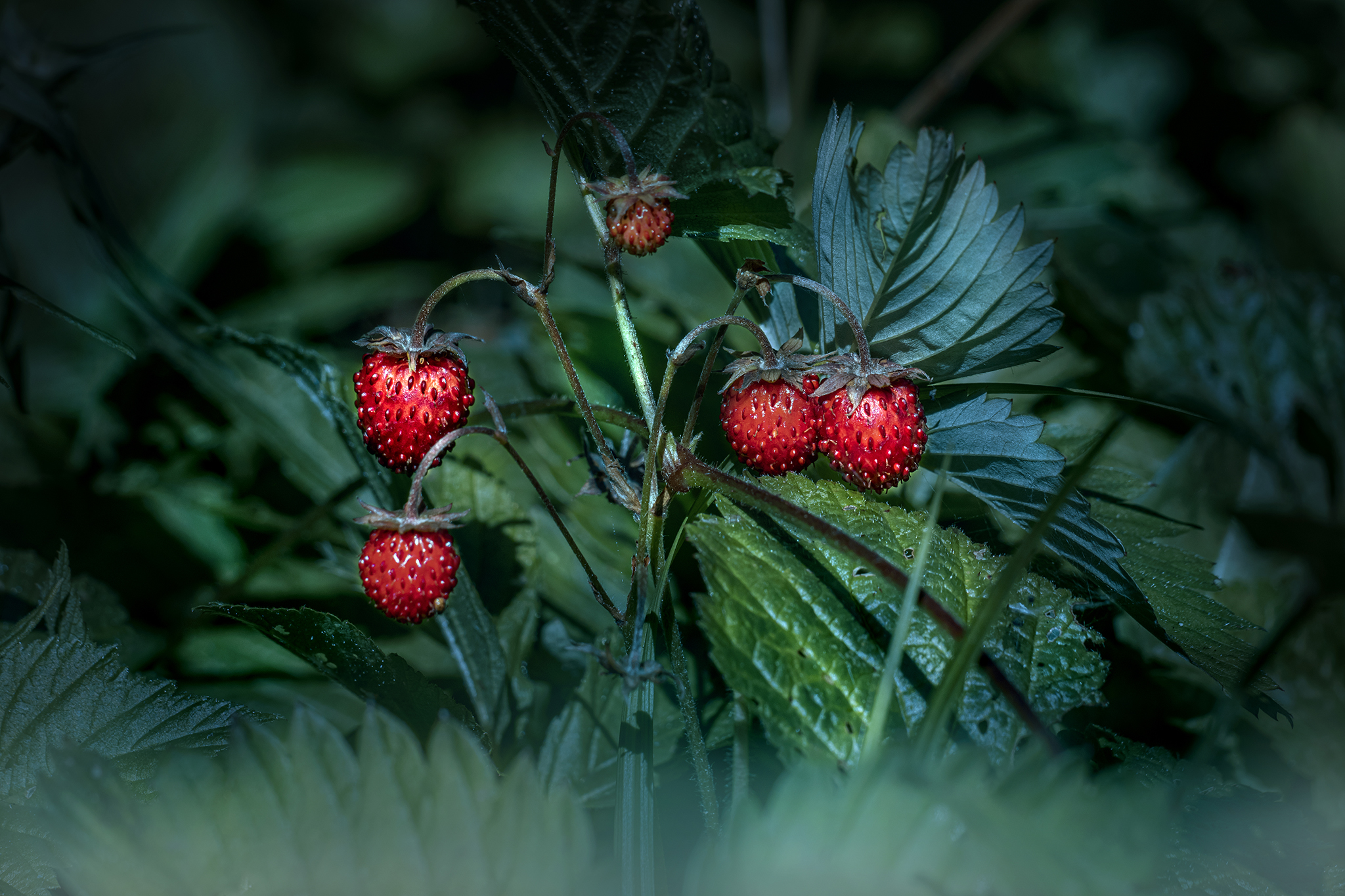Wild strawberries, scientifically known as Fragaria vesca, are a species of strawberry native to Europe, Asia, and North America. Here are some key points about wild strawberries:
- Description: Wild strawberries are small, low-growing plants that typically reach a height of 5 to 15 centimeters. They have trifoliate leaves (divided into three leaflets) with serrated edges and white flowers with yellow centers. The fruits are small, round, and bright red when ripe, with seeds embedded on the surface rather than deeply recessed.
- Habitat: Wild strawberries are commonly found in a variety of habitats, including woodlands, meadows, fields, and along forest edges. They prefer well-drained soil and are often found growing in areas with partial shade.
- Edibility: Wild strawberries are edible and have a sweet, aromatic flavor that is often considered more intense and flavorful than cultivated strawberries. The fruits are typically harvested in the summer months when they are ripe. They can be eaten fresh as a snack, added to salads, or used in desserts, jams, and preserves.
- Cultivation: While wild strawberries are primarily found growing in their natural habitat, they can also be cultivated in home gardens. Cultivated varieties of wild strawberries, such as Alpine strawberries (Fragaria vesca var. semperflorens), are available for gardeners and are prized for their ornamental value, compact size, and delicious fruits.
- Health Benefits: Like cultivated strawberries, wild strawberries are rich in vitamins, minerals, and antioxidants, making them a nutritious addition to the diet. They are particularly high in vitamin C, manganese, and dietary fiber. Consuming wild strawberries may help support overall health and well-being.
- Ecological Importance: Wild strawberries play important ecological roles in their native habitats. They provide food for a variety of wildlife, including birds, mammals, and insects. The plants also help stabilize soil, prevent erosion, and contribute to biodiversity in their ecosystems.
Overall, wild strawberries are cherished for their delicious flavor, nutritional value, and ecological significance. Whether enjoyed fresh from the plant or incorporated into culinary creations, they are a delightful treat that is celebrated by nature enthusiasts and food lovers alike.
Visited 1,001 times, 11 visit(s) today
Views: 1856
Subscribe to the newsletter:
